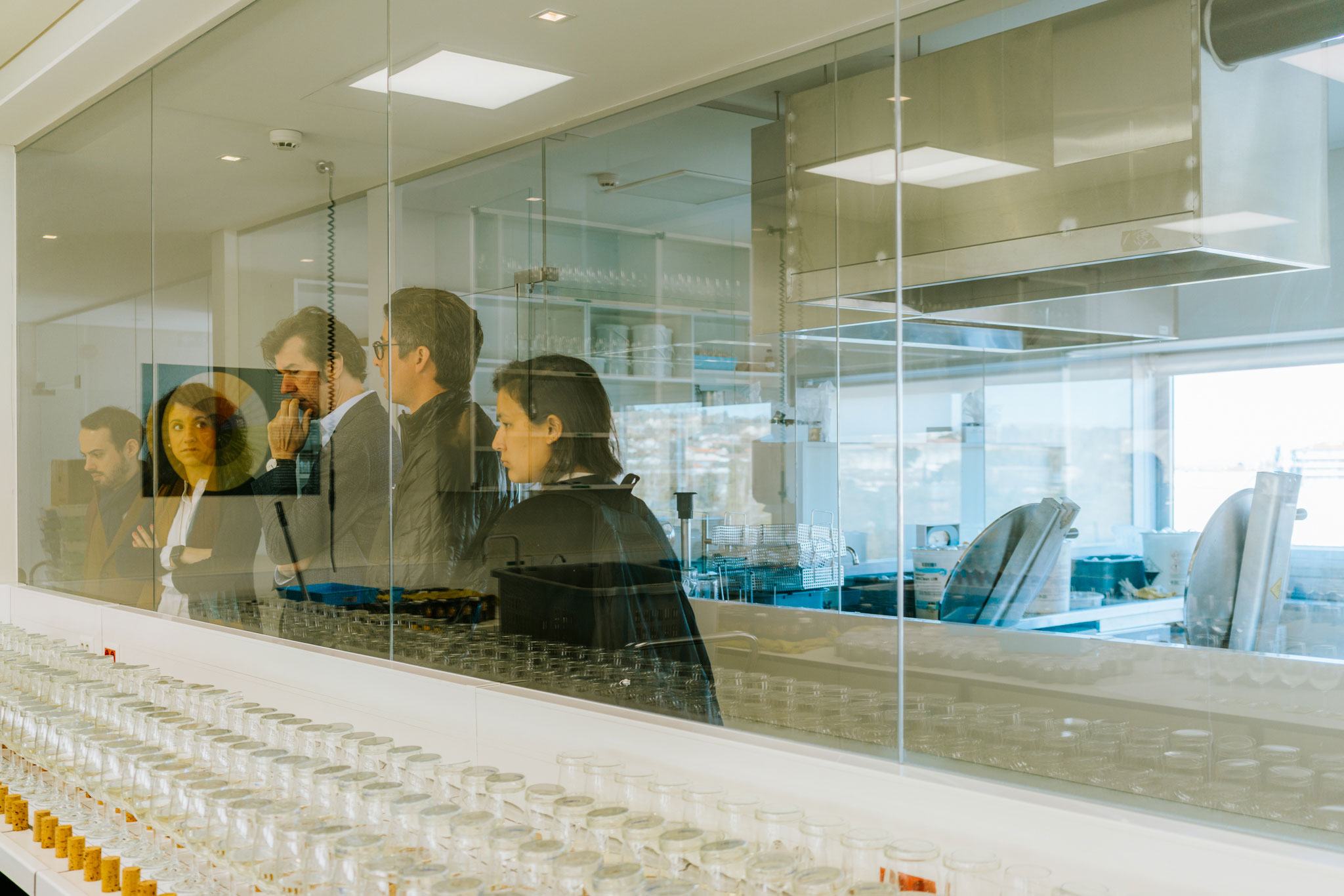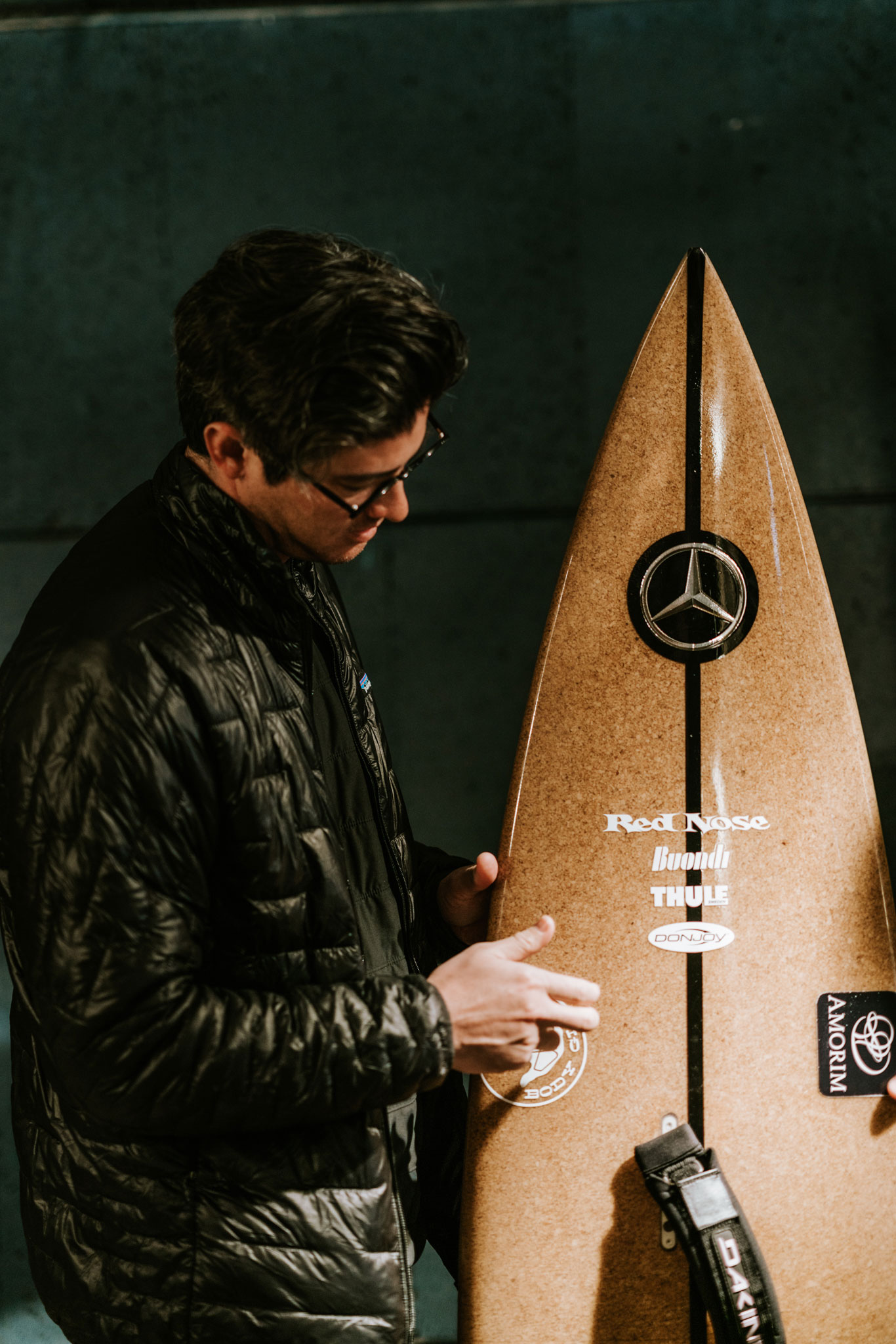From nature to industry
After a visit to a cork oak tree forest in Coruche the previous day, Dominic Leong, Jessie Baxa and Stefan Sagmeister continued their adventure of understanding the mechanisms of Portuguese cork. The two architects and graphic designer started the day off by visiting a cork stopper factory that is part of the large Corticeira Amorim Mozelos complex.
While at the factory, they observed the mechanism used to quickly and effectively cut cork bark into the shape of tiny cylinders, as well as the high tech quality check system that selects the adequate stoppers to be used as wine bottle sealants.

© Ricardo Gonçalves
The tour was also complemented by an approach to the scientific aspect of cork transformation, with a visit to the ND-Tech unit, where the importance of outwitting TCA and other undesired compounds from Amorim’s premium cork stoppers was underlined.

© Ricardo Gonçalves
Shifting from wine to interior and industrial design, this encompassing visit continued on to the Amorim Wicanders showroom. This business branch is dedicated to the production and commercialization of cork-based floor and wall coverings that can be placed both indoors and outdoors. Due to cork’s unique set of features, such as thermal and acoustic insulation, these products add tremendous value to the buildings in which they’re applied.
Leong, Baxa and Sagmeister were also introduced to the Amorim Cork Composites unit, where it is possible to find all sorts of interesting objects – from coffee mugs to surfboards. While at the Composites showroom and factory, the visitors had the chance to ask questions and collect information about the extraordinary versatility of cork composites.

© Ricardo Gonçalves
The visit ended with a presentation led by the Amorim Insulations unit, where the visitors learned about the power of cork insulation products when applied not only in housing complexes, but also in soccer stadiums and other sports equipment in order to improve athletic performance.